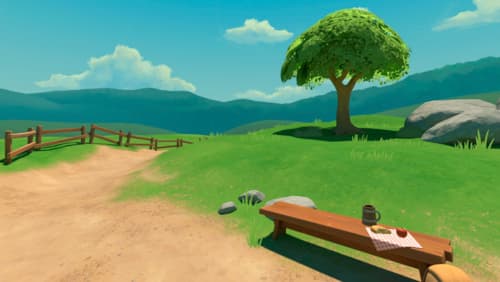How can I translate a .scnz file to a .dae
Asked on 2024-08-04
1 search
To translate a .scnz file to a .dae file, you would typically need to use a Digital Content Creation (DCC) tool that supports both formats. However, the context provided from WWDC sessions focuses on the use of USD (Universal Scene Description) formats for 3D assets, particularly in the context of visionOS and Reality Composer Pro.
Here are the steps you might follow based on the information provided:
-
Export to USD Format: First, you would export your
.scnzfile to a USD format using a DCC tool like Blender, Autodesk Maya, or Houdini. This is because USD is a widely supported format in Apple's ecosystem for 3D content.-
For example, in Blender, you can go to the File menu, select the export option, and choose the Universal Scene Description (USD) format. You can leave most parameters as default and ensure the root name is set correctly for import into Reality Composer Pro.
-
-
Convert USD to DAE: Once you have your file in USD format, you can use a tool like
usdcatto convert it to other formats. However, direct conversion to.dae(Collada) might require additional steps or tools that support both USD and Collada formats.-
The session "What’s new in USD and MaterialX" mentions tools like
usdcatfor format conversion, which might be useful in this context.
-
-
Import and Export in DCC Tool: If direct conversion tools are not available, you can import the USD file back into a DCC tool that supports both USD and Collada formats, and then export it as a
.daefile.- For example, you can import the USD file into Blender and then export it as a Collada file.
While the exact steps for converting .scnz to .dae are not detailed in the provided context, the general workflow involves using USD as an intermediary format due to its robust support in Apple's ecosystem and the availability of tools for handling USD files.

Optimize your 3D assets for spatial computing
Dive into an end-to-end workflow for optimized 3D asset creation. Discover best practices for optimizing meshes, materials, and textures in your digital content creation tool. Learn how to harness shader graph, baking, and material instances to enhance your 3D scene while optimizing performance. Take advantage of native tools to work more effectively with your assets and improve your app’s performance.

Create custom environments for your immersive apps in visionOS
Discover how to create visually rich and performant customized app environments for Apple Vision Pro. Learn design guidelines, get expert recommendations, and explore techniques you can use in any digital content creation tool to begin building your immersive environment.

What’s new in USD and MaterialX
Explore updates to Universal Scene Description and MaterialX support on Apple platforms. Discover how these technologies provide a foundation for 3D content creation and delivery, and learn how they can help streamline your workflows for creating great spatial experiences. Learn about USD and MaterialX support in RealityKit and Storm, advancements in our system-provided tooling, and more.
